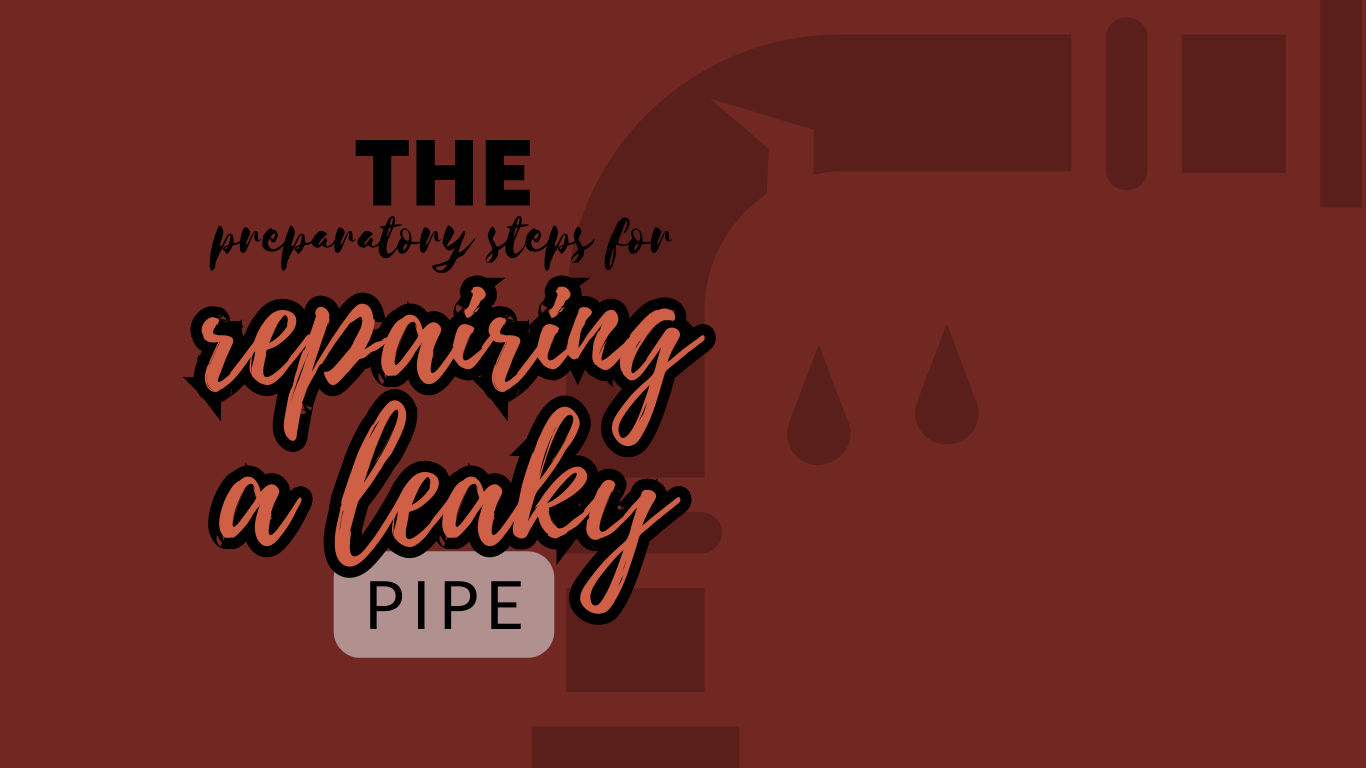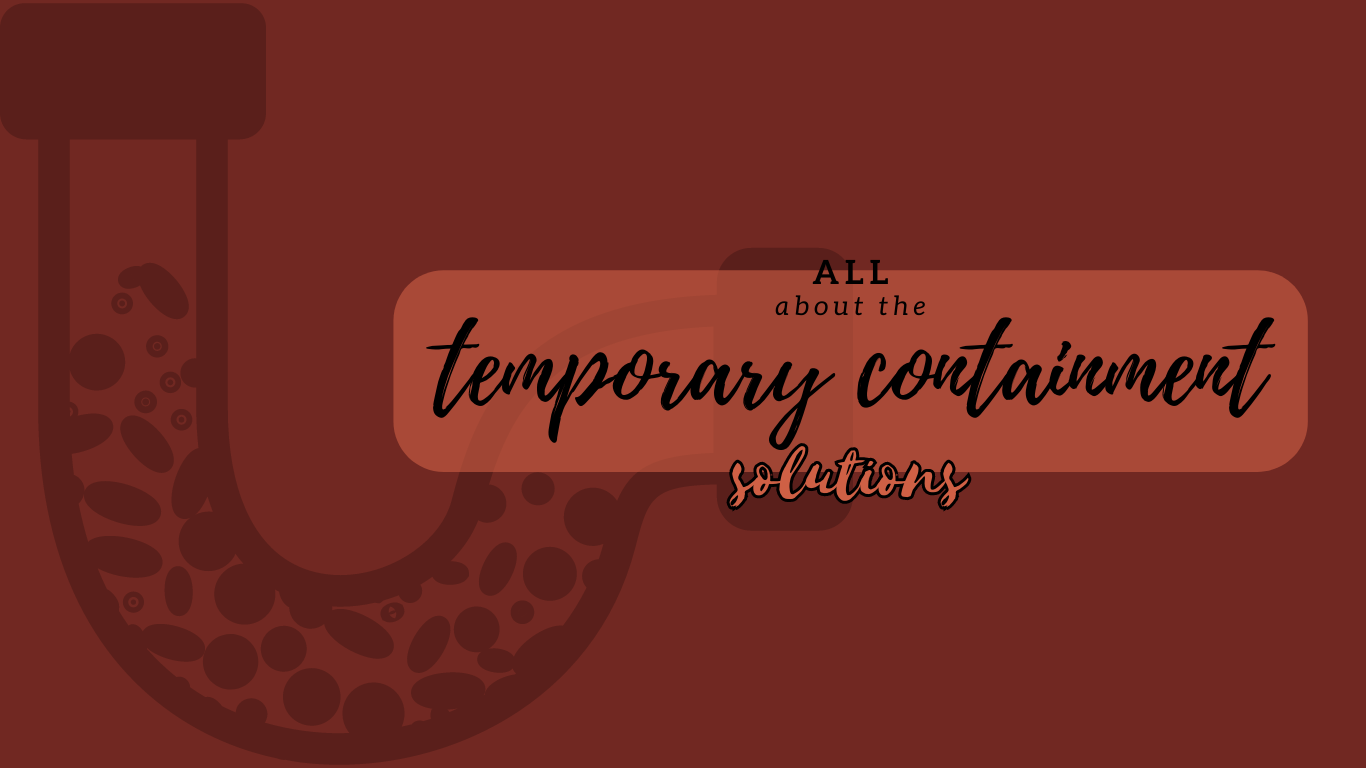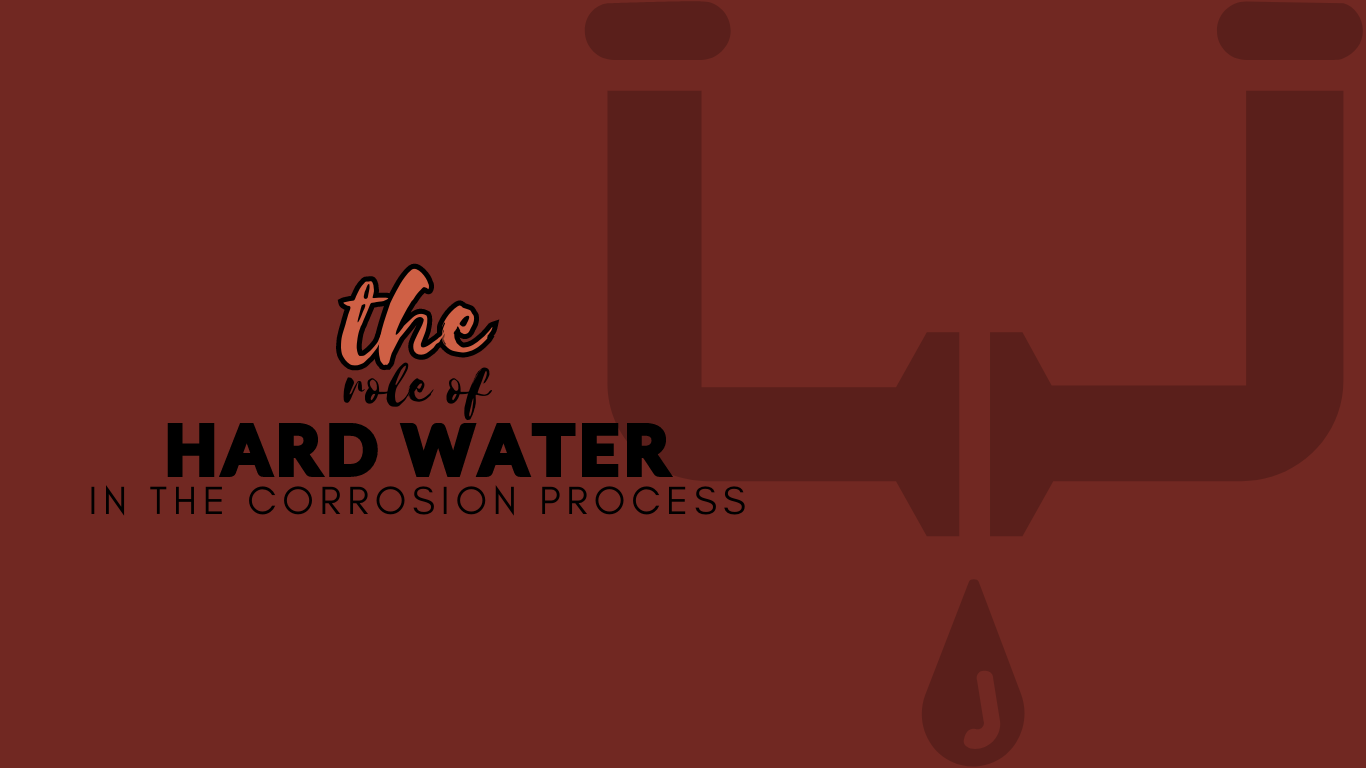Understanding how to fix a leaky pipe is an essential skill for homeowners and renters alike in Franklin, Tennessee.
The importance of promptly dealing with leaks cannot be overstated, not only to protect from potential water damage but also to conserve vital resources.
In this comprehensive guide, we delve into the intricacies of how to fix a leaky pipe.
We begin by highlighting the significance of addressing leaks promptly and look at some alarming statistics on household water wastage due to unattended leaks.
Next, we outline preparatory steps that need to be taken before embarking on any repair work.
As part of our detailed exploration, we provide insights into different techniques suited for various types of pipes, such as copper or CPVC.
We’ll discuss temporary containment solutions like using repair tape while waiting for professional help and preventive measures against future leakages.
In conclusion, we touch upon hard water’s role in corroding plumbing systems and suggest ways to mitigate its effects.
Stay tuned, as each section provides valuable knowledge aimed at helping you tackle your leaking pipe issues effectively.
Table Of Contents:
- Preparatory Steps for Repairing a Leaky Pipe
- Techniques for Fixing Leaks in Different Types of Pipes
- Temporary Containment Solutions
- Preventive Measures Against Water Leaks
- Hard Water’s Role in the Corrosion Process
- FAQs in Relation to How to Fix a Leaky Pipe
- What are the common causes of a damaged pipe?
- How can I identify leaking pipes in my plumbing system?
- How do I fix small leaks in my pipes?
- Can I repair gas pipes myself if they are leaking?
- What tools do I need to fix a leaky pipe?
- How can I temporarily repair a pipe until a professional can fix it?
- Should I turn off the water supply if I have a leaking pipe?
- How do I cut out and replace a damaged portion of a pipe?
- Can I perform emergency repairs on my own before calling a plumber?
- What should I do if water backs up or floods from a leaking pipe?
- Properly addressing and fixing a leaky pipe is crucial to prevent water damage and maintaining a functional plumbing system.
Preparatory Steps for Repairing a Leaky Pipe

If you’ve noticed water pooling under your sink or damp spots on your walls, it’s likely that you have a leaky pipe.
Before starting the repair, it’s important to take some key precautions for a successful and secure fix.
Draining Residual Water from Pipes
The first step in repairing a leaking pipe is to drain any remaining water.
This might seem unnecessary, but working on wet pipes can lead to ineffective repairs and even more damage.
To begin draining the remaining water, open all of your home’s faucets and allow them to run until no more comes out.
Shutting Off Main Valve During Severe Leak Repairs
In cases where the leak is severe or located near electrical installations, it’s crucial to shut off the main valve before starting any work.
The location of this valve varies depending on house design but is generally found near where the main service line enters your home – usually in basements or crawlspaces.
Bear in mind that shutting off this valve will stop all water flow within your household, so plan accordingly.
Also, remember that safety should always come first when dealing with plumbing issues – if unsure about anything at all during these preparatory stages, don’t hesitate to reach out for professional help, such as TN Pipemaster, which offers both regular and emergency plumbing services.
Taking these initial steps ensures not only successful DIY fixes but also minimizes potential risks involved, especially when dealing with major leaks that could cause significant property damage if left unattended over time due to their continuous nature combined with high-pressure levels commonly associated with residential and commercial supply systems alike.
Note
- You may need specific tools like wrenches and plumber’s tape to fix minor leaks yourself.
- Avoid using excessive force while tightening connections, as it could lead to further damage.
- If faced with stubborn bolts or screws, consider applying penetrating oil beforehand to allow easier removal without causing additional harm to surrounding areas during extraction processes, etc.
- For further details on plumbing repairs, this guide may be of assistance.
To fix a leaky pipe, it is important to take preparatory steps such as draining residual water from pipes and shutting off the main valve during severe leak repairs. These initial steps ensure successful DIY fixes while minimizing potential risks involved with plumbing issues. It’s also essential to use specific tools like wrenches and plumber’s tape for fixing minor leaks yourself without using excessive force that could lead to further damage.
Techniques for Fixing Leaks in Different Types of Pipes
Leaky pipes are a real pain, but don’t worry, they can be fixed with the right tools and techniques.
The approach used to mend a leaky pipe is contingent on the material it’s made of.
For instance, copper or CPVC (Chlorinated Polyvinyl Chloride) pipes may require different approaches compared to other materials.
Using Depth Gauges with Copper or CPVC Pipes
Copper and CPVC pipes are commonly used in residential plumbing systems due to their durability and resistance against corrosion.
However, when these types of pipes develop leaks, using a depth gauge becomes necessary for accurate measurements before proceeding with repairs.
A depth gauge is an essential tool that helps determine how deep a cut needs to be made on the pipe for effective sealing.
Once you’ve measured accurately using this tool, you can then proceed to install couplings correctly.
Installing Couplings Correctly After Measuring Accurately
The next step after measuring accurately is installing couplings – small fittings that connect two pieces of pipe together at their ends.
Proper installation of these components ensures an optimal sealing effect, which ultimately fixes the leak.
- Determine coupling size: First off, ensure that your chosen coupling matches the diameter of your leaking pipe exactly. A mismatched size could lead to further leakage problems down the line.
- Sandpipe ends: Before attaching any new parts to your existing system, always make sure both connection points have been thoroughly sanded down. Smooth surfaces allow better adhesion between materials involved during the assembly process.
- Add flux: Apply some flux – a chemical cleaning agent – around the area where the joint will occur to help the solder adhere more effectively, ensuring a stronger bond overall.
- Soldering: Finally, heat up the joint until it’s hot enough to melt the solder, then apply it evenly all the way around, creating a watertight seal and preventing future leaks from occurring in the same spot.
If done properly, following these steps should provide temporary relief from water leakage issues.
However, remember that professional plumbers, like those found at TN Pipemaster, who offer emergency plumbing services as well as regular maintenance checks, are highly recommended, especially if the problem persists despite your best DIY efforts.
The article provides techniques for fixing leaky pipes in different types of materials, such as copper or CPVC. Using a depth gauge is necessary to accurately measure the pipe before installing couplings, which should be done properly by matching sizes, sanding down connection points, adding flux, and soldering for optimal sealing effect. While these steps may provide temporary relief from water leakage issues, it’s recommended to seek professional plumbers’ help if the problem persists.
Temporary Containment Solutions

In a perfect world, every plumbing issue would occur during business hours and be promptly addressed by professional plumbers.
Unfortunately, we are aware that plumbing issues may arise at times when professional help is not immediately available – such as in the middle of the night or on weekends.
This is where temporary containment solutions come into play.
Using Repair Tape as an Interim Solution
A common quick fix for small pipe leaks is using repair tape.
These tapes are specially designed to withstand water pressure and provide a temporary seal over minor cracks or holes until proper repairs can be made.
The application process is simple: clean and dry the area around the leak, cut off enough tape to cover it completely (usually about 6 inches), then wrap it tightly around the pipe, ensuring there’s overlap on both sides of the leak.
Here’s a step-by-step guide on how to use plumber’s tape effectively.
While this solution isn’t meant to last forever, it can buy you some time before TN Pipemaster, your trusted emergency plumbing service provider, arrives.
Scheduling Professional Help
No matter how effective your interim solution may seem, remember that these fixes are just that – temporary.
It’s crucial to get in touch with professionals who have been trained specifically in this field, like our team at TN Pipemaster, for permanent solutions.
We offer comprehensive residential and commercial plumbing repairs and replacement services tailored to meet individual needs while adhering strictly to industry standards and best practices and protocols alike.
We understand emergencies don’t wait; hence we also offer 24/7 emergency services to ensure your home or business experiences minimal disruption due to unexpected plumbing issues.
Our skilled technicians will assess your situation thoroughly before suggesting any necessary repairs or replacements, ensuring the longevity of service life span of existing infrastructure components whenever possible to reduce maintenance costs for future reference purposes alike.
The article provides tips on fixing a leaky pipe, including using temporary containment solutions such as repair tape and scheduling professional help from TN Pipemaster for permanent repairs. The use of plumber’s tape is highlighted as an interim solution that can buy time until emergency plumbing services arrive. It emphasizes the importance of addressing plumbing issues promptly to avoid further damage and reduce maintenance costs in the long run.
Preventive Measures Against Water Leaks
Water leaks can cause significant damage to your home and result in high utility bills.
Taking proactive steps to guard your residence from water damage is possible; there are many strategies that can be employed.
Invest in HVAC Upgrades
Upgrade your HVAC system to prevent recurrent scenarios of pipe leakages.
Extreme temperature fluctuations can cause small cracks in metal structures like household piping systems, leading to leaky pipes.
An upgraded HVAC system will provide better temperature control and reduce stress on pipes, reducing the risk of frozen pipes during cold seasons.
Install a UV Light Electronic Air Cleaner
Consider installing a UV light electronic air cleaner to kill airborne bacteria and viruses while improving indoor air quality.
Damp environments created by undetected water leaks serve as breeding grounds for mold spores, which can cause potential health risks.
A UV light electronic air cleaner will help keep harmful particles at bay, ensuring a healthier living environment for you and your family.
TN Pipemaster offers FREE installation.
Maintain Your Water Supply Back System Regularly
Regularly maintain your water supply back system, including checking shut-off valve functionality and ensuring the main water valve turns off completely.
Dry surfaces are crucial for watertight seal formation during temporary fixes using waterproof tape before a professional plumber arrives for a permanent repair.
Always hire a licensed plumber to ensure the highest service standards are met every time. Don’t let a small leak fully damage your home.
Hard Water’s Role in the Corrosion Process

Water is essential, but the quality of water that flows through your pipes can significantly impact their longevity and performance.
Hard water, characterized by high mineral content, particularly calcium and magnesium carbonates, can lead to several plumbing issues like leaky pipes or damaged parts.
Impact of Hard Waters on Plumbing Systems
The accumulation of calcium and magnesium carbonates in hard water can cause a narrowing of the pipes, as well as an increase in pressure within them – which may eventually lead to leaking.
This buildup not only narrows down the pipe end but also increases pressure within it – a perfect recipe for a leaking copper pipe.
This process accelerates in hot water pipes as heat speeds up chemical reactions, making them more susceptible to damage.
Installation of Softeners to Mitigate Effects
To combat these detrimental effects caused by hard waters, installing water softeners comes highly recommended.
These devices work by replacing problematic minerals with sodium ions via an ion exchange process, thus reducing hardness levels effectively before supplying them back into your system.
- Avoids scale formation: By converting hard into soft water using resin beads present within these units, you prevent scale deposits from forming along internal fitting surfaces, thereby maintaining smooth flow rates at all times without any obstructions whatsoever.
- Prolongs lifespan: This preventative measure ensures the longevity of the service life span of existing infrastructure components, which would otherwise need frequent replacements due to premature wear & tear caused primarily because constant exposure to harsh environmental conditions prevalent throughout the year, especially during winter months when temperatures drop below freezing point causing expansion and contraction cycles within metal structures including household piping systems small cracks often develop unnoticed.
- Saves money: Though the initial investment might seem steep, benefits reaped long term make it a worthwhile decision considering reduced maintenance costs and future reference purposes alike, plus added advantage of enjoying cleaner, better tasting drinking and cooking usage too.
In addition to installation softeners, other methods such as flushing out your system regularly with vinegar or installing phosphate feeders could be considered based upon the severity of the problem faced on an individual case basis alone, ensuring optimum results achieved each time around while minimizing chances of recurrence of the same issue again near foreseeable future.
Hard water with high mineral content can cause corrosion in pipes, leading to leaks. Installing a water softener can mitigate the effects of hard water by reducing hardness levels and preventing scale formation, which prolongs the lifespan of existing infrastructure components and saves money on maintenance costs. Other methods, such as flushing out your system regularly or installing phosphate feeders, may also be considered based on individual cases for optimum results.
FAQs in Relation to How to Fix a Leaky Pipe
What are the common causes of a damaged pipe?
Damaged pipes can be caused by factors such as corrosion, freezing, age, excessive water pressure, shifting soil, or physical damage.
How can I identify leaking pipes in my plumbing system?
Look for signs of water stains, dampness, or mold growth on walls, ceilings, or floors.
Also, listen for hissing or dripping sounds and monitor your water meter for any unexplained changes in water usage.
How do I fix small leaks in my pipes?
Small leaks can often be temporarily fixed using methods like applying epoxy putty or using pipe sealing tape.
However, it is recommended to consult a professional plumber for a proper and long-lasting repair.
Can I repair gas pipes myself if they are leaking?
It is strongly advised to leave gas pipe repairs to licensed professionals due to the safety risks involved.
Contact a qualified gas technician immediately if you suspect a gas leak.
What tools do I need to fix a leaky pipe?
Common tools for repairing leaks include adjustable pipe clamps, pipe cutters, crimping tools, hose clamps, and pipe repair kits.
How can I temporarily repair a pipe until a professional can fix it?
You can use techniques like applying a rubber patch with a hose clamp or using pipe repair tape as a temporary solution.
However, it is essential to have a professional plumber address the issue promptly.
Should I turn off the water supply if I have a leaking pipe?
Yes, it is recommended to shut off the water supply to prevent further water damage and allow for proper repairs.
How do I cut out and replace a damaged portion of a pipe?
Use a pipe cutter to remove the damaged section, then clean and prepare the ends of the remaining pipe before installing a new section using appropriate fittings and joining methods.
Can I perform emergency repairs on my own before calling a plumber?
While emergency repairs can be done in certain situations, it is crucial to prioritize your safety and contact a professional plumber as soon as possible for a proper and lasting repair.
What should I do if water backs up or floods from a leaking pipe?
Immediately turn off the main water supply valve and contact a plumber for assistance in resolving the issue and preventing further damage.
Properly addressing and fixing a leaky pipe is crucial to prevent water damage and maintaining a functional plumbing system.
The answer to the question of how to fix a leaky pipe has been revealed!
Don’t let a leaky pipe drain your wallet or damage your property – take action now!
First, turn off the main valve to prevent further water damage, then drain any residual water from the pipes.
Next, use depth gauges and couplings to fix the leak, or try a temporary solution like temporary repair area tape while you wait for professional help.
Investing in upgrades and installing softeners can prevent future leaks and protect your plumbing system.
Remember, a little prevention goes a long way in avoiding a plumbing emergency!
Contact TN Pipemaster today to schedule an appointment!
